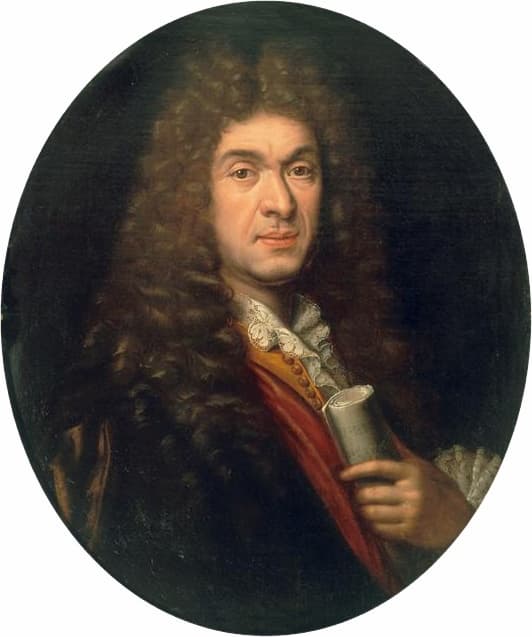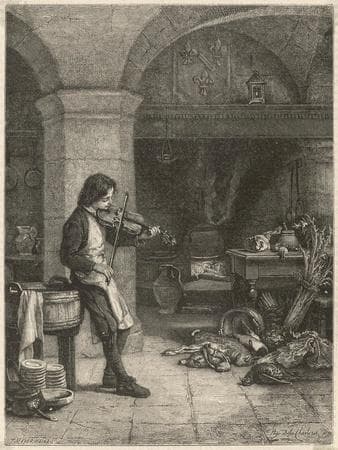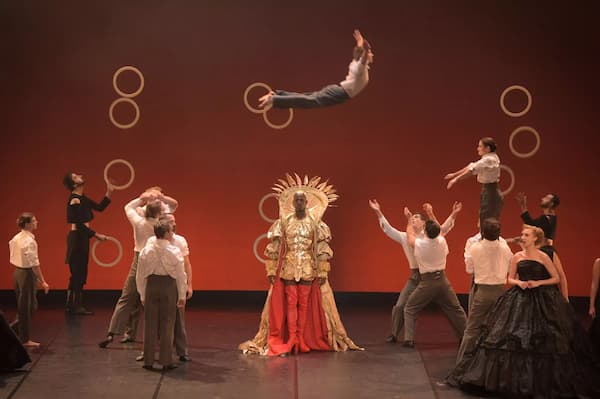Jean-Baptiste Lully was an Italian-born French court and operatic composer who is credited with the invention of the “French Overture” in the 1650s. In addition, his music produced a radical revolution in the style of dances at the court, replacing slow and stately movements with lively dance types such as gavottes, menuets, and rigaudons. From about 1662, Lully controlled French court music and his style of composition was imitated throughout Europe.
Jean-Baptiste Lully: Armide, “Passacaille”
Florentine Origins

Portrait of Jean-Baptiste Lully by Paul Mignard
Jean-Baptise Lully was born on 28 November 1632 in Florence, then in the Grand Duchy of Tuscany. His father, Lorenzo Lulli, originally hailed from the Tuscany region, but he made his way to Florence around the age of 20. In 1620, he married a miller’s daughter, Catarina del Sera, and they had three children: Verginio, Giovanni Battista, and Margherita. Little is known of Giovanni Battista’s general studies, but he was probably taught to read and write by his father.
His musical education apparently came courtesy of a Franciscan friar, who taught him the rudiments of playing the guitar and how to read a tablature. It has been suggested that he was sent to a school for singers, but when his voice broke, the promising treble became an ordinary adult voice. At some point, he also picked up the violin and happily entertained bystanders and crowds during street festivals and Mardi Gras.
Jean-Baptiste Lully: Le bourgeois gentilhomme Suite (Tempesta di Mare)
To France

Jean-Baptiste Lully as a young boy
We don’t know exactly how Lully ended up in France. However, an anecdote suggests that he was spotted during a street performance by Roger de Lorraine, son of Charles, Duke of Guise. He was returning to France and was looking for someone to tutor his niece, Mademoiselle de Montpensier (La Grande Mademoiselle), in the Italian language. As such, the fourteen-year-old boy left his native Italy for France in late February 1646.
Giovanni Battista Lulli became Jean-Baptiste Lully, and he served Mademoiselle, who was then living in the Palais des Tuileries, for 5 years as a chamber boy. Lully was quickly able to complete his musical education by studying the harpsichord and the rules of composition with Nicolas Métru and Nicolas Gigault. Both men were organists of the Jesuit church of St Louis in the rue Saint-Antoine in Paris.
Jean-Baptiste Lully: Alcidiane (Ensemble La Follia; Miguel de la Fuente, cond.)
The Dancer and Composer

Jean-Baptiste Lully © Wikipedia
The Palais des Tuileries was a busy place, and several masters served in the princely household. Among them was Jacques Cordier, known as Bocan, who probably helped Lully to perfect his violin playing. But most importantly, there was Jean Regnault who trained Lully to become a dancer. Regnault was acquainted with all the dancers of the royal ballets, and he actually collaborated with them.
Apparently, the first work to have been composed by Lully was for the Mascarade de la Foire Saint-Germain, performed at the Grande Mademoiselle’s palace in March 1652. Only the libretto has survived, but it was probably through Regnault, who became mâitre à danser du Roi in 1651, that Lully entered the service of Louis XIV.
Jean-Baptiste Lully: Ballet de Xerxes (Mary Enid Haines, soprano; Sharia Nafziger, soprano; Aradia Ensemble; Kevin Mallon, cond.)
Ballet de la Nuit

Reimagined Ballet Royal de la Nuit
Lully was still in the services of Mademoiselle de Montpensier, but luck was on his side. Mademoiselle was exiled to the provinces in 1652 after the rebellion known as the Fronde. Lully saw his chance and “begged his leave because he did not want to live in the country.” Once the princess had granted his request, Lully made his way back to Paris, and he was invited to attend a rehearsal at the Ballet Royal de la Nuit.
Lully was asked if he would like to take on some entrées, and after listening to the music, he decided that it was too slow. He borrowed a violin from one of the players, made some alterations to the music, and instructed the dancers. The opening night of Ballet de la Nuit took place on 23 February 1653, and it would turn out to be a resounding success.
The young King and some dukes and marquises danced well, having been coached by Lully. Lully also danced in five sections; he was a shepherd, a soldier fighting two thieves, a Grace, Sosia from a Molière play and finally a tramp on crutches. Even before the spectacular festivities were over, the king appointed him to the post of “compositeur de la musique instrumentale,” and for the next couple of years, Lully combined the careers of dancer and composer.
For more of the best in classical music, sign up for our E-Newsletter
